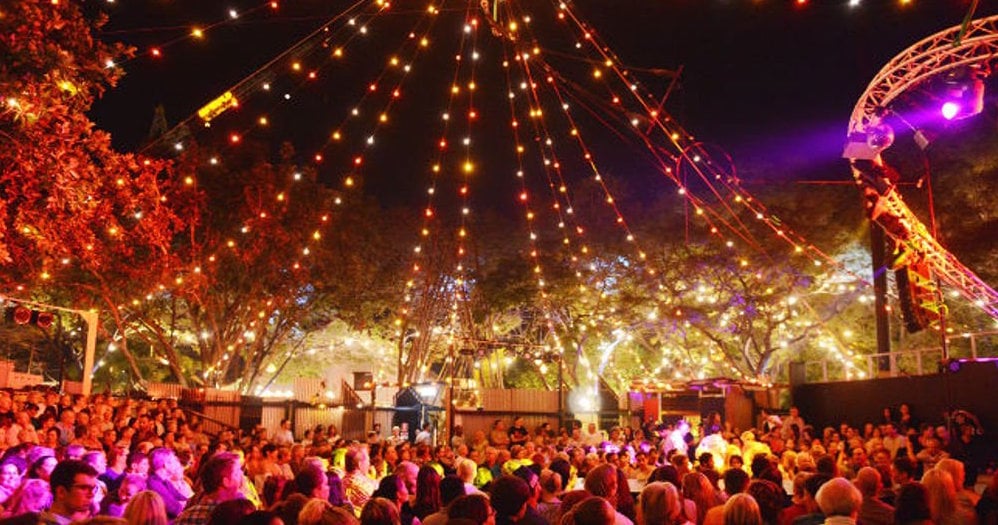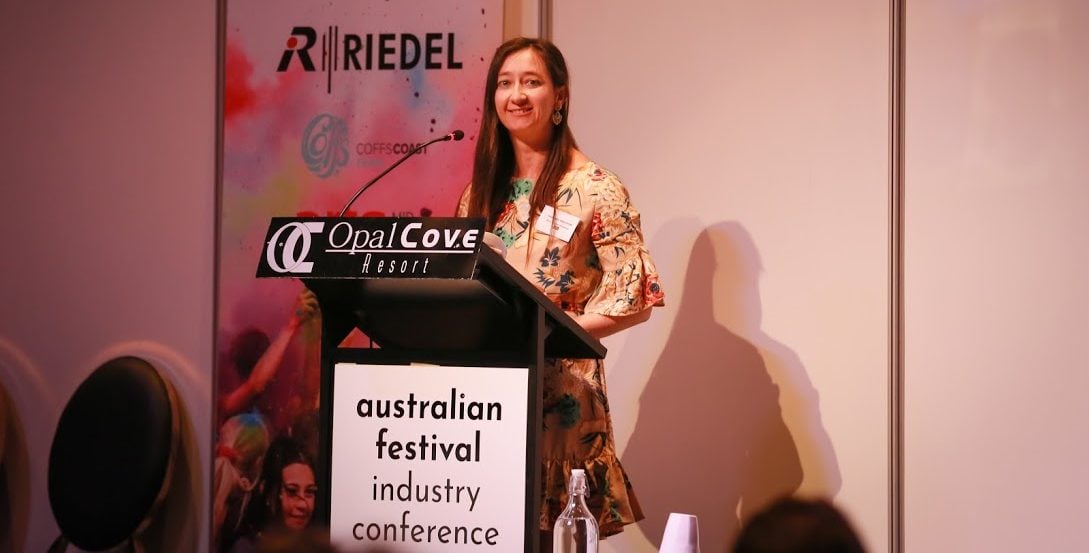6 takeaways from the Australian Festival Industry Conference

The inaugural Australian Festival Industry Conference (AIFC) saw over 100 delegates from all parts of the country and all kinds of festivals (not just music) gather to share ideas.
The ongoing woes of music festivals in the state definitely took a distant second or third place, with the first-ever conference of its kind drawing rave reviews, having already been expanded to an additional day ahead of time.
Delegates included promoters, government, consultancy services, app builders, educational institutions, risk managers, suppliers, and advisers on First Nations engagement, safety, crowd tracking and managing volunteers.
The AFIC had already hit the ground running when feedback from delegates stretched it out from a one-day event to two days (October 24 & 25) to cover all the topics they wanted to be discussed.
“I didn’t expect the overwhelming amount of positive feedback from the delegates,” says conference founder and event director, Carlina Ericson. “There was such a positive vibe, and people were interacting and learning from each other.
“Towards the end of the event, I was swamped by people saying there was nothing around like the AFIC to cover everything they needed to know.”
While some suggested it should have been a week-long event, a decision will be made before the Christmas holidays on what form it will take in 2020.
If Ericson does bring it back, it will be most likely a three-day meet.

1. Festivals should be a “content company”
This was the primary message from music and festival industry veteran and retired SXSW senior business development manager, Phil Tripp’s much-applauded keynote.
“Just plopping 30,000 people in a field with a few makeshift stages isn’t enough to stay in business,” said Tripp. “Because content can scale to millions.”
He gave the example of Pickathon, held near Portland, Oregon, “part weekend camping adventure, part live concert series, part 83-hour-long music video shoot”. Its attendance capped to 3,500 per day but major names push to get on.
Said Tripp, “Pickathon’s 500-person production team, floods the farm with more than 80 cameras to record every guitar strum and cymbal crash from the festival’s 64 musical acts.
“The idea is to turn this four-day burst of creativity into a long tail of video clips that can be released and monetized over the course of the next year.”
He noted that this year more than 5 million sets of eyeballs tuned in.
“In contrast at Coachella, Beyonce’s live stream went out to 450,000 viewers on YouTube during its short run during the event.”
Tripp also spoke about adding to visual impact through holograms, 3D glasses, and technologies like MagicLeap which superimposes 3D computer-generated imagery over real-world objects.
2. The app that saves lives on-site
Also receiving much applause was EMS Event Medical CEO Mike Hammond’s explanation of the company’s EMS Assist app, which allows promoters to quickly rush to the aid of distressed patrons and cuts down requests for ambulances.
It allows patrons and staff to call medics for help and, among its features, can –through GPS – track if someone’s mobile phone has been on a ‘fallen’ position for a certain amount of time.
The app’s latest technology can detect in the site when a patron’s body is over-heating, and collect the person’s medical history as medics go to their assistance.
3. Using digital to cut down thousands of hours of manual work
Growing an event needs a total digital transformation, which is what Adelaide Fringe CEO Heather Croall did when she set out a target for the Fringe to sell a million tickets per year by 2022.
Her changes streamlined thousands of manual work hours covering speaker registration and performer bookings and a new ticketing system as well as helping to increase the Fringe’s philanthropic funding stream tenfold.
4. Choosing the right medical safety personnel
This was the panel that launched the most amount of questions from delegates.
EMS Event Medical, NSW Ministry of Health and St Johns Ambulance talked about pre-hospital health and medical safety and what promoters needed to ask medical teams before hiring them – like how advanced their technology was.
It also gave the health pros the chance to talk about the fresh NSW music festival guidelines from their perspective
5. There’s money to be made
Live streaming can be used to extend brand and revenue, and 30% of those who see a live-streamed video will attend that same event the next year.
Baby Boomers are the ones to target. They’re cashed up, happy to spend their kids’ inheritance and at that stage where they want to create memories from events.
Cashless is king. RFID is not only efficient but studies show patrons buy 20% more at your festival if they’re using a wristband.
6. The growth factor
The greater move to micro festivals at remote and exclusive locations is on the rise.
Tripp spoke about Secret Solstice in Iceland, where a capped 9,000-strong audience watches a concert in a glacier.
Also growing in popularity are those who’re over cruises and seasickness and head to mini-festivals staged on islands, hotels and resorts.
The importance of food, in terms of popularity of food festivals, experiences like cooking demos with celebs, and offering of the “proper” food to patrons by careful research.






























